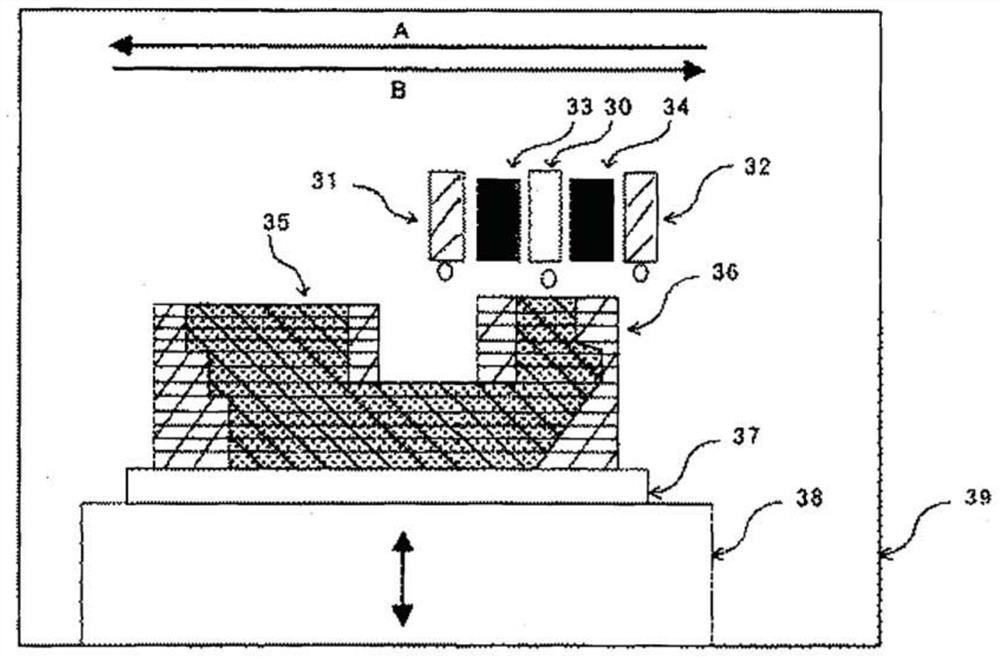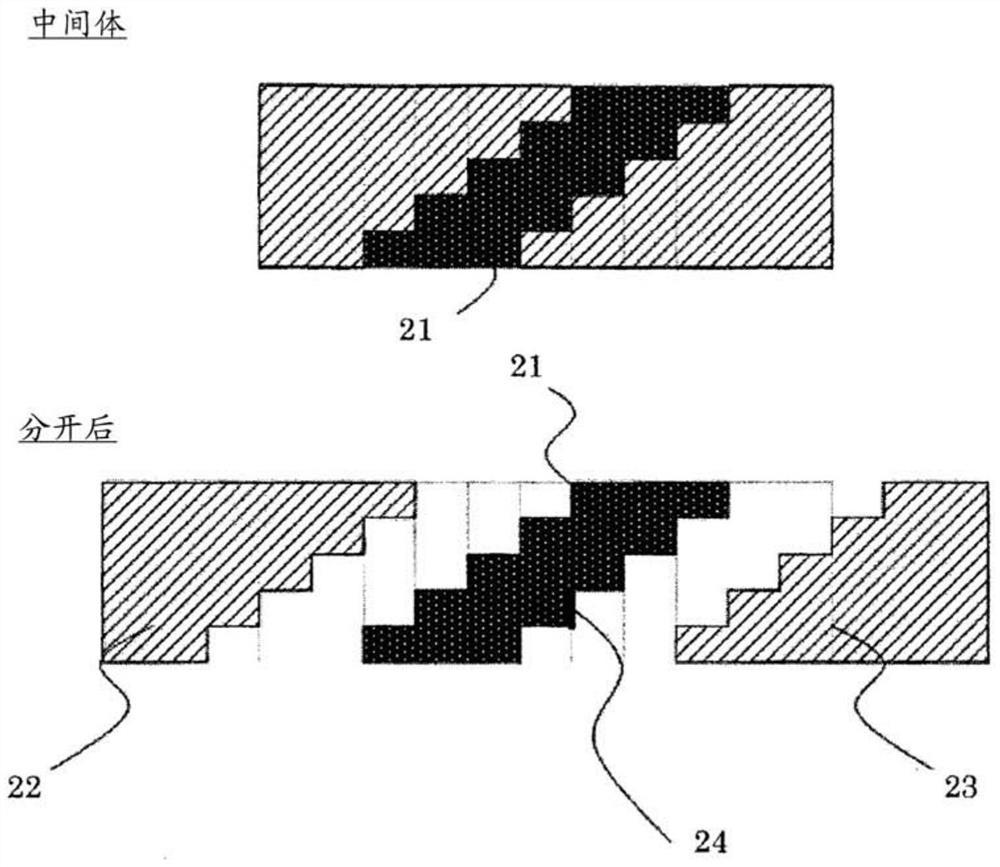Three-dimensional object and method of forming the same
A technology for three-dimensional objects and objects, which can be applied to other home appliances, liquid material additive processing, 3D object support structures, etc., and can solve the problems of not providing three-dimensional object formation methods
- Summary
- Abstract
- Description
- Claims
- Application Information
AI Technical Summary
Problems solved by technology
Method used
Image
Examples
no. 1 approach
[0092] [Three-dimensional Object Formation Method of First Embodiment]
[0093] The three-dimensional object forming method of the first embodiment of the present invention includes a first step and a second step, and further includes other steps as necessary.
[0094] The three-dimensional object forming method of the first embodiment repeats the above steps multiple times. The number of repetitions varies depending on the size, shape, structure, etc. of the three-dimensional object to be formed, and cannot be generalized. However, when the thickness of each layer is in the range of 10 μm to 50 μm, the object can be precisely formed without peeling off the layers. Therefore, layers must be repeatedly stacked up to the height of the three-dimensional object to be formed.
[0095] The three-dimensional object forming method of the first embodiment can efficiently form a soft object made of a hydrogel produced from a hydrogel precursor.
[0096] The steps of the three-dimensi...
no. 2 approach
[0117] [Three-dimensional Object Formation Method of Second Embodiment]
[0118] The three-dimensional object forming method of the second embodiment of the present invention includes a first step, a third step, and a fourth step, preferably includes a fifth step, and further includes other steps as necessary.
[0119] The three-dimensional object forming method of the second embodiment repeats the above steps multiple times. The number of repetitions varies depending on the size, shape, structure, etc. of the three-dimensional object to be formed, and cannot be generalized. However, when the thickness of each layer is in the range of 10 μm to 50 μm, the object can be precisely formed without peeling off the layers. Therefore, layers must be repeatedly stacked up to the height of the three-dimensional object to be formed.
[0120] In forming a soft object made of a hydrogel produced from a hydrogen precursor by the three-dimensional object forming method of the second embodime...
Embodiment approach
[0151] The specific implementation of the three-dimensional object forming method of the present invention will be explained below.
[0152] Soft hydrogel objects are obtained using a soft object material as the first liquid (object composition) and a hard object material as the second liquid (support composition).
[0153] As mentioned above, in order to obtain a soft three-dimensional object, a soft object material is deposited on the object part and a hard object material is deposited on the support part. To obtain a hard three-dimensional object, conversely, a hard object material is deposited on the object part and a soft object material is deposited on the support part.
[0154] The method for delivering the liquid may be an inkjet method or a dispenser method as long as they can apply liquid droplets to intended positions with appropriate precision. Essentially the same implementation applies to either case. Therefore, the following explanation will mainly focus on th...
PUM
| Property | Measurement | Unit |
|---|---|---|
| viscosity | aaaaa | aaaaa |
| surface tension | aaaaa | aaaaa |
| viscosity | aaaaa | aaaaa |
Abstract
Description
Claims
Application Information
 Login to View More
Login to View More - R&D
- Intellectual Property
- Life Sciences
- Materials
- Tech Scout
- Unparalleled Data Quality
- Higher Quality Content
- 60% Fewer Hallucinations
Browse by: Latest US Patents, China's latest patents, Technical Efficacy Thesaurus, Application Domain, Technology Topic, Popular Technical Reports.
© 2025 PatSnap. All rights reserved.Legal|Privacy policy|Modern Slavery Act Transparency Statement|Sitemap|About US| Contact US: help@patsnap.com



